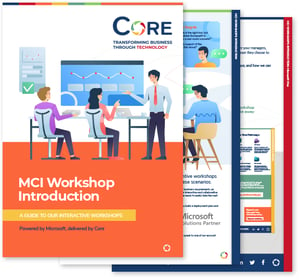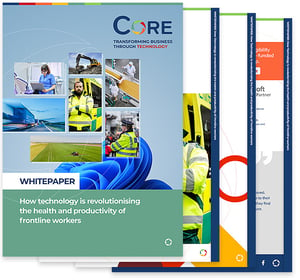Across the UK, IT teams are feeling the squeeze. Expectations are rising—from supporting hybrid work and enabling AI, to keeping systems secure and compliant—yet resources remain tight.
Whether it’s headcount, specialist skills, or time, many IT departments are being asked to deliver more with less.
And it’s not just a temporary blip. In 2025, the pressure is structural. Talent shortages, budget constraints, and the growing complexity of digital environments mean IT leaders need new strategies to stay ahead—without burning out their teams.
Understanding the Resource Challenge
Even in well-resourced organisations, the IT workload has expanded dramatically. Teams are now expected to manage:
- Endpoint security across hybrid workforces
- Cloud migrations and infrastructure modernisation
- Microsoft 365 and Azure governance
- Licensing and cost optimisation
- Cybersecurity resilience and compliance (e.g. NIS2)
- AI enablement and automation support
- Day-to-day user support and system maintenance
It’s no surprise that many are stretched thin. Unfilled vacancies, lack of specialist expertise, and the pace of change all contribute to what’s becoming a sustained resource crunch.
Common Signs of Overstretch
- Reactive firefighting takes priority over strategic projects
- Security or compliance gaps emerge due to lack of bandwidth
- IT staff are at risk of burnout or high turnover
- New technologies (like Microsoft Copilot or Power Platform) go underused
- Business stakeholders experience delays or inconsistent service
These aren’t just operational issues—they impact employee satisfaction, customer experience, and long-term competitiveness.
Strategies to Bridge the Gap
1. Prioritise ruthlessly
Not every project can (or should) happen at once. IT leaders should work closely with business stakeholders to identify high-impact, low-effort wins, and phase more complex programmes strategically across FY25–26.
2. Invest in managed services where it matters
Partnering with a managed service provider for areas like cloud operations, licensing management, or security monitoring can relieve pressure on internal teams—freeing them up to focus on strategic innovation.
3. Leverage automation and AI
From Copilot to Power Automate, the Microsoft ecosystem now enables powerful task automation, ticket triage, reporting, and end-user self-service. When deployed thoughtfully, these tools reduce the manual load on IT and speed up service delivery.
4. Upskill and cross-train your team
Rather than hiring for every niche skill, look at how to build internal capability with targeted training—especially around governance, low-code tools, and Microsoft’s evolving roadmap.
5. Align with flexible, scalable partners
Look for IT partners who can scale with your needs, adapt quickly, and offer both project-based and ongoing support. The goal is to create breathing room, not dependency.
Turning a Challenge into an Opportunity
The resource crunch is real—but it also offers an opportunity to rethink how IT delivers value. By embracing smarter tooling, focusing on strategic outcomes, and working with the right external support, organisations can reduce the strain on internal teams and create a more resilient, agile IT function.
At Core, we work with organisations across the UK to help fill the gaps—whether that’s taking on Microsoft licensing and cloud management, bolstering security, or supporting transformation projects from design through to delivery.
If your IT team is stretched and strategic goals are slipping, let’s talk about how we can help you turn that around—without adding pressure.






